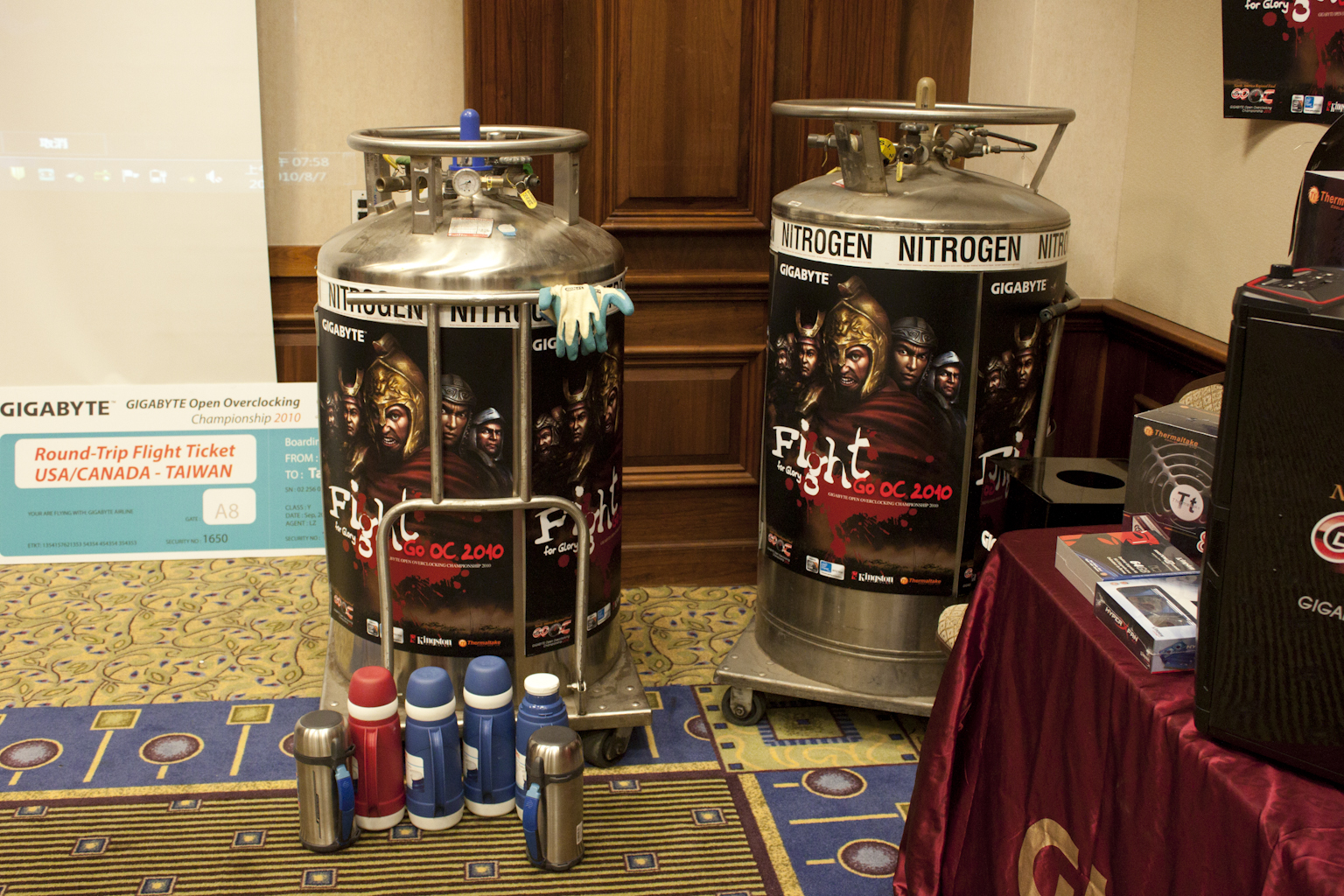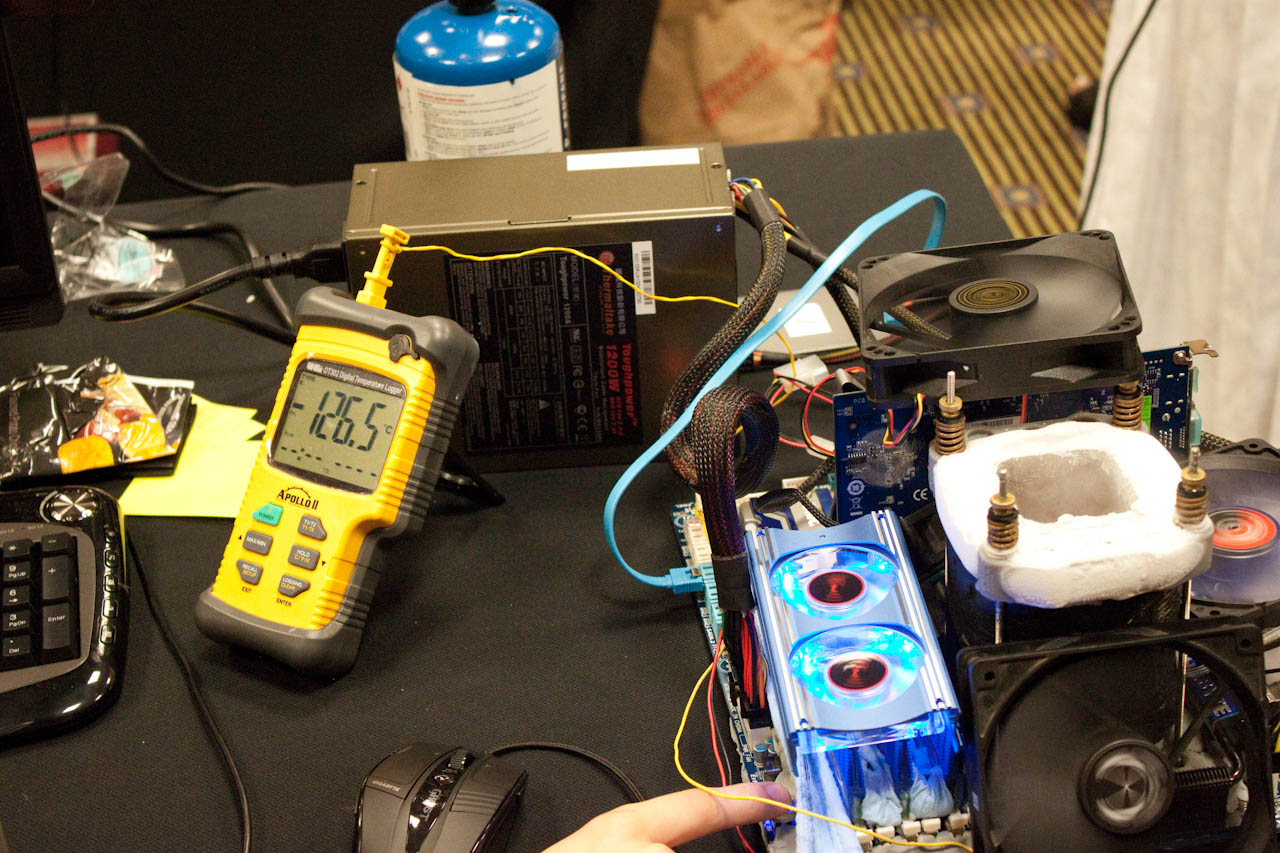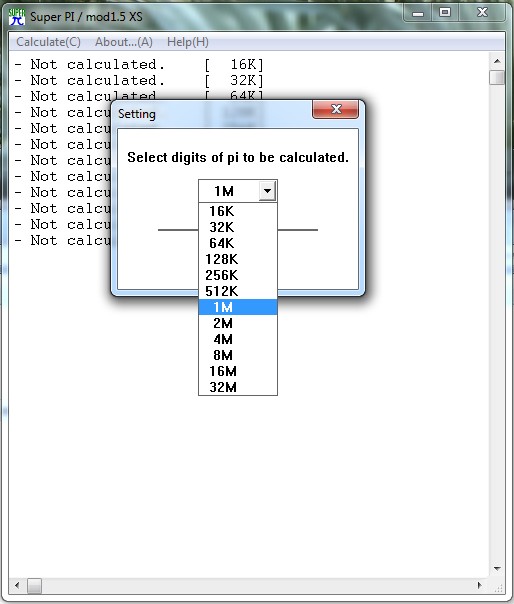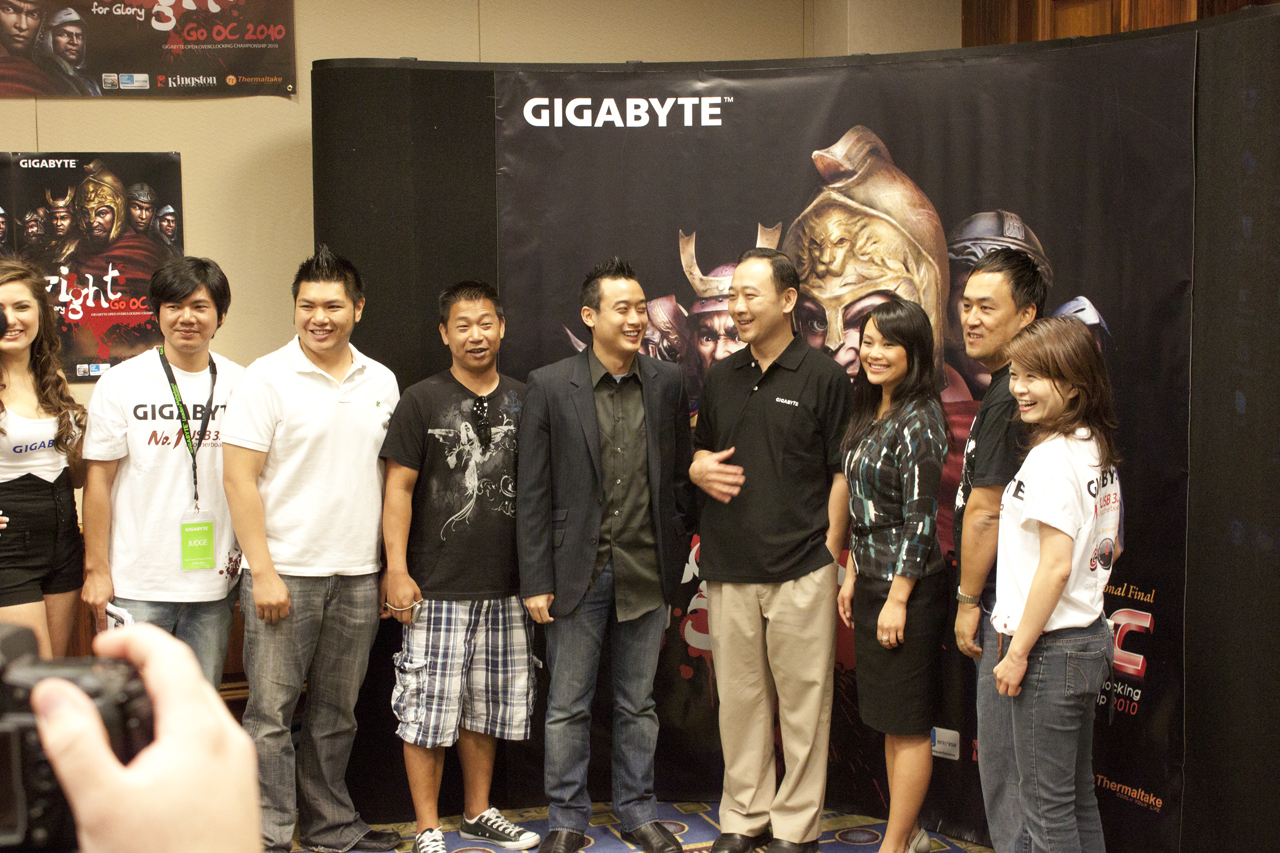But let’s take a look back and see the events that took place to get them there.
The morning started off a little late at around 9:45am seeing the beginning of the interviews there were jokes that a few of the overclockers were going to filibuster to help keep the rest of the crowd from needing to sit in front of the camera.
 |
 |
 |

After that, as we have told you before, numbers were drawn by each of the overclockers present to find out which station they would get for the day. Each station was loaded up with the following hardware; Gigabyte X58A-UD7
Gigabyte X58A-UD7
Thermal Take Tough Power 1200 Watt PSU
Kingston Triple Channel DDR3 kit with Fan.
Kingston 64GB SSD (preinstalled with Windows XP and a few tools for the event).
A Gigabyte GK-K6800 multimedia keyboard
a Gigabyte Gaming mouse
Gigabyte GT240 512MB video card
Gigabyte wide screen LCD monitor
Each of the entrants were responsible for bringing their own LN2 pots, putty, or any other material for protecting the motherboard from the condenstation and any other tools they used for extreme overclocking. Mikeguava brought his own Highspeed PC stand.
 |
 |
 |
Then there was the LN2 or Liquid Nitrogen. If you are not familiar with this handy cooling tool then here are some interesting facts for you. Nitrogen (as I am sure most of you know) is an inert colorless, odorless, gas at room temperature. It makes up about 78% of Earth’s atmosphere. To get Nitrogen to condense into a liquid requires quite a bit of cold and pressure. With a boiling point of -195.8c at normal atmospheric pressure you can imagine it is hard to keep this in a liquid state. However with the use of specially designed containers that maintain a much higher pressure you can maintain nitrogen in a liquid state for much longer. This is what we had at the GOOC. There were two large tanks of LN2 sitting in the corner.
 |
 |
 |
These tanks carefully maintained the pressure (releasing pent up gas at random intervals) and allowed the overclockers to maintain a continual stream of LN2 to keep their CPUs cold. We saw some that were as cold as -126c. Unfortunately after extended periods ice will build up under the LN2 and reduce the efficiency of the pot. At times like this you have to melt the ICE quickly. Some used hot air guns for this while others broke out propane torches.
 |
 |
After the selection each the guys had to assemble their station and then the fun started. The first round consisted of PiFast and Wprime testing.
 |
 |
PiFast is a test that calculates the number pi out to a staggering 17 billion places. This test relies heavily on the CPU and memory speed to get things done. It also can go south on you pretty fast if you are unstable. The most commonly used version for benchmarking is Hexus PiFast as it stays with v4.1 to maintain compatibility.

wPrime is a prime number calculator that takes advantage of multi-core CPUs it is one of the more common and easy to use benchmarks for overclocking. For the tests here the 32M run was used.
After each run the results had to be checked by one of the judges and then a screen shot recorded to a USB thumb drive (one they picked when they drew their station number). These were then compared at the end of the round to see who had the top spots.
 |
 |
At the end of Round One we had a tie for first place between Mikeguava and sno.lcn. Second place was a three-way tie between Ross, Vapor and 3oh6. Third place was held by Duex. We also lost two competitors and were down to 10 going into the second round.
Round Two started up after a 20 minute break with SuperPi and MAXXMEM as the tests to run here. The 10 remaining overclockers dived in and the fun started all over again.
SuperPi, for those of you that do not know, is another means for calculating the number Pi out to a specific number of decimal places. Unlike PiFast, SuperPi has a GUI front end and is limited to 32 Million places for its calculation. It also uses FFT arithmetic and Borwein’s algorithm for its calculations. It is used to test the speed and stability of a system. Most of the time SuperPi is used in a limited run of 1 Million decimal places as this is a quick test and does not rely on the memory subsystem to run. It is also common to use a modded version of the benchmark which has a checksum validation at the end of each run to ensure its accuracy and to guard against cheating. For this event an 8M run of SuperPi was used.
MAXXMEM was a new one to me but also one that sort of made sense. It is a test of the memory subsystem that uses common (copy, read, write and latency tests combined into one global score) memory related tasks to test speed and stability. However, there was a slight snag with running MAXXMEM. Fugger pointed out that there was a tweak available in the application CPU Tweaker that would optimize your settings to MAXXMEM. We have looked for this but have not found exactly what he was talking about. Despite this, in the end it was decided by Hi Cookie that CPU Tweaker was not allowed during this test run.
After another two hours where we saw more CPUs give up their lives in the pursuit of a ticket to Taipei we had all of the scores in and it was up to the judges to award the points and decide on the winners.
You all know the outcome from above. It took a little over 30 minutes for that to become final. Once the announcements were made and the prizes given out Ross, sno.lcn, and mikeguava were each given a bottle of Champaign to toast with. Thankfully after much of it was sprayed on the press and each other there was enough left to toast with.
 |
 |
 |
 |
 |
 |
After all of the fun was over Rita brought everyone back up to the front for a final photo op and we all moved on to the celebration dinner and after party. At least most of us did; there were a few of the overclockers that decided to lag behind and see what they could make an X58A-UD9 do with some LN2.
In all it was a blast for everyone involved. I am honestly looking forward to the next time they have an event like this. Thanks goes out to all of the sponsors and to Gigabyte for making this a great event.





